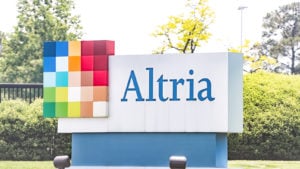
The consumer staples sector is home to some of the most well-known dividend growth stocks in the world. In fact, the consumer staples sector has the most Dividend Aristocrats of any individual market sector.
Consumer staples are also appealing stocks for risk-averse investors, as defensive industries such as food and beverage and personal care products see steady demand, even during recessions.
The following three consumer staples stocks have increased their dividends for over 50 years, have yields above 3%, and should continue to raise dividends each year.
The Coca-Cola Company (KO)

Coca-Cola (NYSE:KO) is the world’s largest beverage company. It owns or licenses more than 500 unique non-alcoholic brands. Since the company’s founding in 1886, it has spread to more than 200 countries worldwide. Its brands account for about 2 billion servings of beverages worldwide every day, producing about $45 billion in annual revenue. The company also has an exceptional 61-year dividend increase streak, making it a Dividend King.
Coca-Cola posted second-quarter earnings on July 26. Results were ahead of expectations on both revenue and earnings, and the company raised guidance for the year. Adjusted earnings per share (EPS) came to 78 cents, which was 6 cents ahead of expectations. Revenue beat estimates by $250 million at $12 billion, which was a 6.2% growth rate from the comparable period a year ago. Operating margin was 31.6% of revenue, up from 30.7% a year ago. This was driven primarily by strong top-line growth and the bottling operation refranchising effort.
Latin America led the way at 25% quarterly growth, while Europe/Middle East/Africa was up 9%, and North America rose 9% as well. Volume was flat once again, extending the streak of essentially no movement in volume, but price and mix were outstanding once again.
For the full year, Coca-Cola now sees organic revenue growth of 8% to 9% for this year and for adjusted EPS to rise between 9% and 11%. This growth will easily allow the company to raise its dividend each year.
The payout ratio has been in the mid-70% range for the past few years but is below that now with rising earnings. Dividend growth will remain a priority for management. Therefore, we see the payout as safe with room to grow, particularly with generally improving free-cash-flow generation. Shares currently yield 3%.
Target Corporation (TGT)

Target (NYSE:TGT) is a discount retailer based in the U.S. Its business consists of about 1,850 big-box stores, which offer general merchandise and food. They also serving as distribution points for the company’s burgeoning e-commerce business.
Target posted first-quarter earnings on May 17, and results were better than expected on both the top and bottom lines. Adjusted earnings-per-share came to $2.05, which was 29 cents better than expected. Revenue was up fractionally year-over-year to $25.3 billion, beating estimates by $40 million. Traffic was up 0.9% year-over-year, down from 3.9% in the same period a year ago. Comparable sales were up 0.7%, offset by a decline in comparable digital sales, so the company missed estimates of growth of 1.1%. Adjusted EBITDA came to $2.02 billion, which was much better than the $1.81 billion expected. Target noted it reduced inventory by 16% year-over-year as the company bought less in order to reduce promotional activity. First quarter gross margin was 26.3% of revenue, which was up from 25.7% a year ago.
While second-quarter results weren’t quite as strong across the board, the company still beat earnings expectations by a wide margin. Target has grown its earnings-per-share at an average annual rate of nearly 13% during the last decade.
Accelerated sales growth, thanks largely to the company’s digital expansion, has fueled its earnings growth and will continue to do so. The company also aggressively repurchases shares, which boosts EPS growth. The company has reduced its share count by about -4.8% per year in the last six years. We see continued comparable sales growth as driving results, along with sizable margin expansion from low levels in 2022 and 2023, and a tailwind from the buyback.
Target has grown its dividend for more than five decades, making it a Dividend King. The company is investing heavily in its business in order to navigate through the changing landscape in the retail sector. The payout ratio is now 52%, which indicates a safe dividend. The stock has a 3.3% dividend yield.
Altria Group (MO)

Altria Group (NYSE:MO) was founded by Philip Morris in 1847. Today, it sells the Marlboro cigarette brand in the U.S. and a number of other non-smokeable brands, including Skoal and Copenhagen. Altria also has a 10% ownership stake in global beer giant Anheuser Busch InBev (NYSE:BUD), in addition to large stakes in Juul, a vaping products manufacturer and distributor, as well as cannabis company Cronos Group (NASDAQ:CRON).
The company reported second-quarter results on Aug. 1. Quarterly revenue of $5.44 billion rose 1.3% year-over-year and was in-line with estimates. Adjusted earnings-per-share of $1.31 beat by a penny.
Altria expects full-year adjusted EPS growth of 1% to 4% from last year, which will allow it to continue raising dividends.
The decline in the U.S. smoking rate continues, though it has recently recovered somewhat. In response to the negative long-term trend, Altria invested billions of dollars in Canadian marijuana producer Cronos Group for a 55% equity stake (including warrants) and a 35% equity stake in e-vapor manufacturer Juul Labs.
Altria ranks very highly in terms of safety because the company has tremendous competitive advantages. It operates in a highly regulated industry, which virtually eliminates the threat of new competition in the tobacco industry. Altria enjoys strong brands across its product portfolio, including the no. 1 cigarette brand. As a result, it has pricing power and brand loyalty.
In addition, tobacco companies enjoy low manufacturing and distribution costs, thanks to its economies of scale. This has fueled Altria’s tremendous dividend growth, enabling it to boast an impressive dividend growth streak of 53 years.
Altria’s business model is also highly resistant to recessions. Sales of cigarettes and other tobacco products hold up well when the economy declines. This explains why Altria’s earnings rose steadily throughout the Great Recession, and why earnings were unscathed during the brief 2020 recession.
On the date of publication, Bob Ciura did not hold (either directly or indirectly) any positions in the securities mentioned in this article. The opinions expressed in this article are those of the writer, subject to the InvestorPlace.com Publishing Guidelines.






